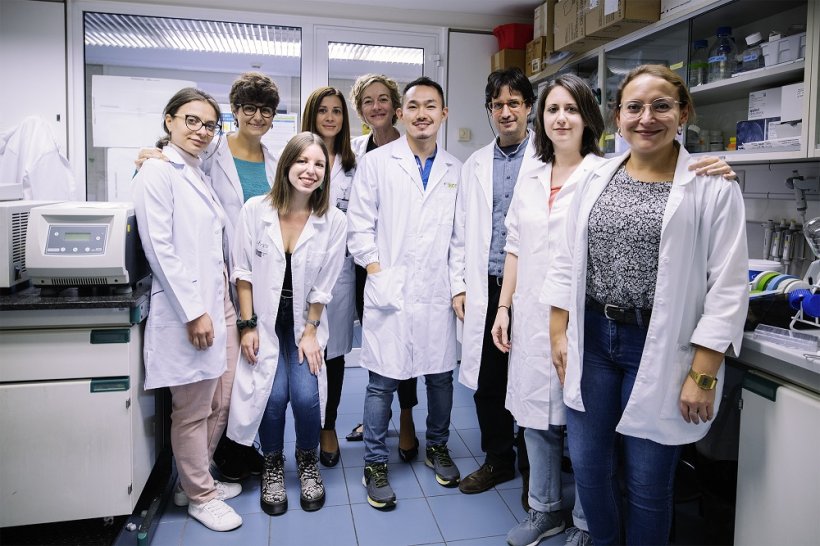
Image source: Universitat de Barcelona
News • Lung adenocarcinoma
Therapeutic target against common lung cancer identified
The TIMP-1 protein levels in both tissues and blood have been repeatedly associated with a poor prognosis in lung cancers, but its role in this cancer process was, to date, unknown.
These results, published in the journal Matrix Biology, open the door to the design of new treatments against this disease. “In recent decades, cancer research has been aimed at having more specific treatments for each type of tumour and patient, improving the patients’ prognosis. In this line, this study is relevant because it identifies a therapeutic target for those patients with adenocarcinoma subtype non-small cell lung cancer, the most common lung cancer”, notes Paula Duch, UB researcher and first author of the article.
The study includes the participation of researchers of the Hospital Clínic, the August Pi i Sunyer Biomedical Research Institute (IDIBAPS), the Respiratory Diseases Networking Biomedical Research Centre (CIBERES), the Health Research Institute of the Hospital Clínico San Carlos (IdISSC) and the Mayo Clinic (United States). The study received funding from the State Research Agency and Cellex Private Foundation.
If this approach works, the use of these antifibrotic drugs in combination with anti-cancer therapies that attack other aspects of the tumour, such as immunotherapy, could be considered
Paula Duch
TIMP-1 is a protein unusually secreted by fibroblasts, a type of non-malignant cell that accompanies cancer cells and is the main component of what is called the tumour microenvironment. To understand the role of TIMP-1 in this process, the researchers used a unique collection of fibroblasts derived from lung cancer patients at the Hospital Clínic in Spain. Specifically, they performed cell culture assays in vitro and in vivo on non-small cell lung cancer, which accounts for up to 85% of lung cancers and is subdivided into two subtypes: adenocarcinoma and squamous cell carcinoma.
The results first showed that elevated levels of TIMP-1 in lung cancer are due to fibroblasts secreting "pathological levels" of this protein. Next, they found that TIMP-1 from fibroblasts causes increased tumour proliferation and invasion when it interacts with the CD63 receptor on cancer cells. And finally, they found that "this tumour axis formed by the interaction between TIMP-1 and CD63 occurs only in the adenocarcinoma subtype and not in squamous cell carcinoma", says Jordi Alcaraz, also researcher at CIBERES.
These results may facilitate the development of new therapies directed against this pathological interaction. "Knowing that patients with adenocarcinoma have hyperactive fibroblasts that secrete TIMP-1 excessively allows us to consider the use of therapies that prevent its secretion," explains Paula Duch.
In this sense, the study, in addition to showing that fibroblasts play a very important role in tumour progression, also opens up a way to "attack this tumour axis": the so-called antifibrotic drugs, developed to inhibit the pathological functions of these cells. "The idea is to examine whether antifibrotic drugs are capable of inhibiting the abnormal secretion of TIMP-1 and whether this inhibition reduces the progression of adenocarcinoma tumours", says the researcher. “In the long term,” she adds, “if this approach works, the use of these antifibrotic drugs in combination with anti-cancer therapies that attack other aspects of the tumour, such as immunotherapy, could be considered”.
These results could work for other cancers, as the TIMP-1 protein is also widely described as a biomarker of poor prognosis in many types of solid tumours. "Therefore, in other highly fibrotic tumours with elevated levels of TIMP-1 and its receptor, CD63, it is likely for this axis to play an important pro-tumoural role", concludes Duch.
Source: Universitat de Barcelona
13.09.2022











